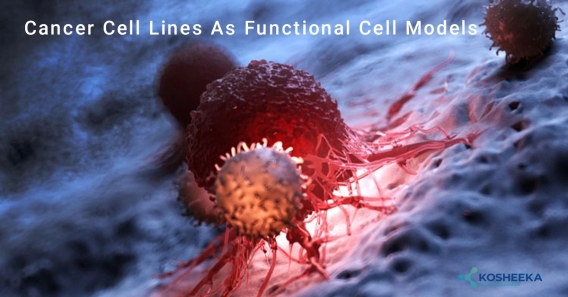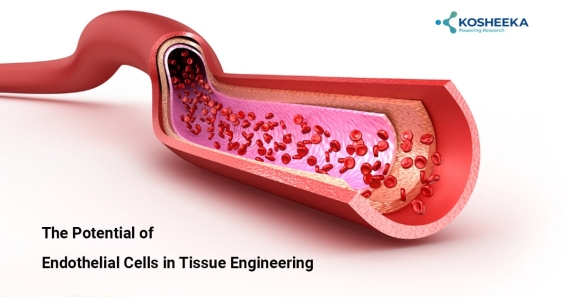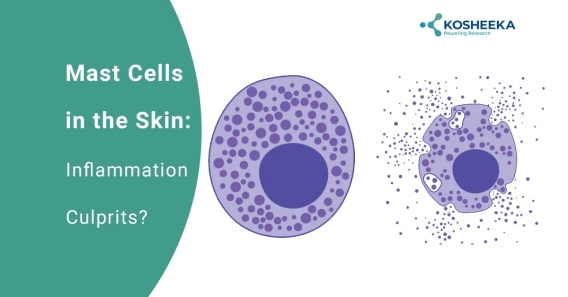
kosheekaa's Updates (91)
-
9 Tips for Thawing and Freezing Cells 9 Tips for Thawing and Freezing Cells are:- 1) Before freezing, check the health of the cells 2) Make use of a suitable freezing medium 3) Freeze cells at an adequate concentration 4) Freeze your cells as early as possible Read more:- https://kosheeka.com/9-tips-for-thawing-and-freezing-cells/ #customizedprimarycellsThere are numerous distinctions between cancerous and non-cancerous cells. A few of the differences are well-known, while others were uncovered more recently and are less well-known. You might be curious about the differences between cancer cells if you’re dealing with your own or a loved one’s cancer. Read more:- https://kosheeka.com/normal-cells-vs-cancer-cells/Applications of Dental Pulp Stem Cells in Tissue Engineering Oral tissues and organs are connected functionally in the oral cavity, which is a complex structure. Dental pulp stem cells have therapeutic potential in the regeneration of dental, periodontal, and oral systems. Dental pulp stem cells (DPSCs) are neural crest-derived cells with a high capacity for differentiation across numerous cell lineages. The regeneration of salivary glands and bone deformities appears to be feasible by...Primary Cells in Advancing 3D Cell Culture for Biomedical Research Cell Culture techniques enhance biomedical research, notably in drug discovery, cancer biology, and regenerative medicine, and are showing significant promise. In most cases, these procedures entail growing two types of cells in vitro: cell lines and primary cells. Read more:-Primary Cells in Pulmonary Research Respiratory research encompasses a wide range of conditions, including acute and long-term dysfunction as well as infectious disease. Respiratory disease is triggered by a mixture of factors, ranging from smoking and air quality to genetic factors and the microbial community of the lung. The lung has a large but tender surface that can be damaged by intruding pathogens. New diseases like coronavirus disease 2019 (COVID-19) pose a major risk. Read...The Power of Exosomes Stem cells can be employed to cure disease and in regenerative medicine. The use of stem cells, local modifications in the microenvironment, and tissue engineering-related transplantation is anticipated to address significant medical issues. The majority of current research focuses on tissue repair and regeneration, with mesenchymal stem cells (MSCs) being one of the most popular study subjects. MSCs are useful as seed cells, and they are one of the trendiest topics...Mesenchymal Stem Cells & Cancer Biology Mesenchymal stem cells (MSCs) are a particular kind of cell that may develop into several types of tissue and play a part in tissue regeneration and repair. Mesenchymal stem cells also have immunomodulatory properties, which are attracting a lot of interest as a prospective strategy for the development of cell and gene treatments. The mesenchymal stem cell communication pathway is a promising target for cancer therapy and may open up...Cancer Cell Lines As Functional Cell Models Cell lines are in vitro model systems that are widely used in different fields of medical research, especially basic cancer research and drug discovery. Under the right conditions and with appropriate controls, authenticated cancer cell lines retain most of the genetic properties of the cancer of origin. Modern cancer research still relies heavily on human cancer cell lines. In fact, they are frequently utilized as preclinical model systems to...The Potential of Endothelial Cells in Tissue Engineering For many years, mature human endothelial cells derived from human vasculature were the main tool used to research the biology of human endothelial cells. The early 1970s saw the successful isolation of ECs from human umbilical veins, which was of utmost significance and gave researchers around the world unheard-of access to human EC cultures. Consequently, endothelial cells quickly established themselves as a crucial tool in vascular...Mast cells(MCs) are best known for being essential effector cells in allergic reactions of the acute variety, which can even result in potentially fatal toxic shock syndromes. Yet, MCs also contribute significantly to the first line of defence against pathogens due to their strategic positioning at the host-environment interfaces and abundance of receptors. In addition to being harmful to diseases caused by MCs, MCs also exacerbate other inflammatory skin disorders. Read more:-Human Dendritic Cells: The Sentinels of the Immune System Human dendritic cells have been developed to collect and break down antigens into peptides that can be displayed on MHC molecules that T cells can recognise. However all DC subtypes are responsible for antigen uptake, handling, and appearance to naive T cells, DCs are heterogeneous, including myeloid and plasmacytoid DCs. The DC subtypes vary in location, migration patterns, pathways, specific immunological function, and reliance...The Biology of Exosomes Exosomes are endosomal-derived EVs that range in size from 40 to 160 nm (average: 100 nm). Sequential dilatation of the plasma membrane eventually gives rise to multivesicular bodies, which may cross paths with other intracellular vesicles and organelles and add to the variety of exosome components. Read more:- https://kosheeka.com/the-biology-of-exosomes/All About Bone Marrow Mononuclear Cells! Since the discovery of stem cells, researchers have discovered that bone marrow mononuclear cells can come from a variety of sources, including circulating fibroblasts, mesenchymal stem cells, endothelial progenitor cells, mesenchymal stem cells, and hematopoietic stem cells. It is possible that PBMCs could develop into various lineages in various microenvironments given the presence of these various stem cell populations. Further research has shown...Stromal Vascular Fraction: A Review of Its Biology and Applications Stromal vascular fraction (SVF) is a term used to describe the heterogeneous population of cells found in the adipose tissue of mammals. The SVF includes various cell types, including adipocytes, preadipocytes, endothelial cells, pericytes, fibroblasts, and immune cells. In recent years, the SVF has gained increasing attention as a source of cells for regenerative medicine and tissue engineering applications. Read more:-...Mononuclear Cells: The Secret Warriors of the Immune Response Mononuclear cells are a type of white blood cell that play a critical role in the immune response. They are characterized by their single, round nuclei and are involved in various functions, including fighting infection, removing dead cells, and regulating the immune response. In this article, we will provide an overview of mononuclear cells, including their structure and function, as well as their role in the immune response and...
















